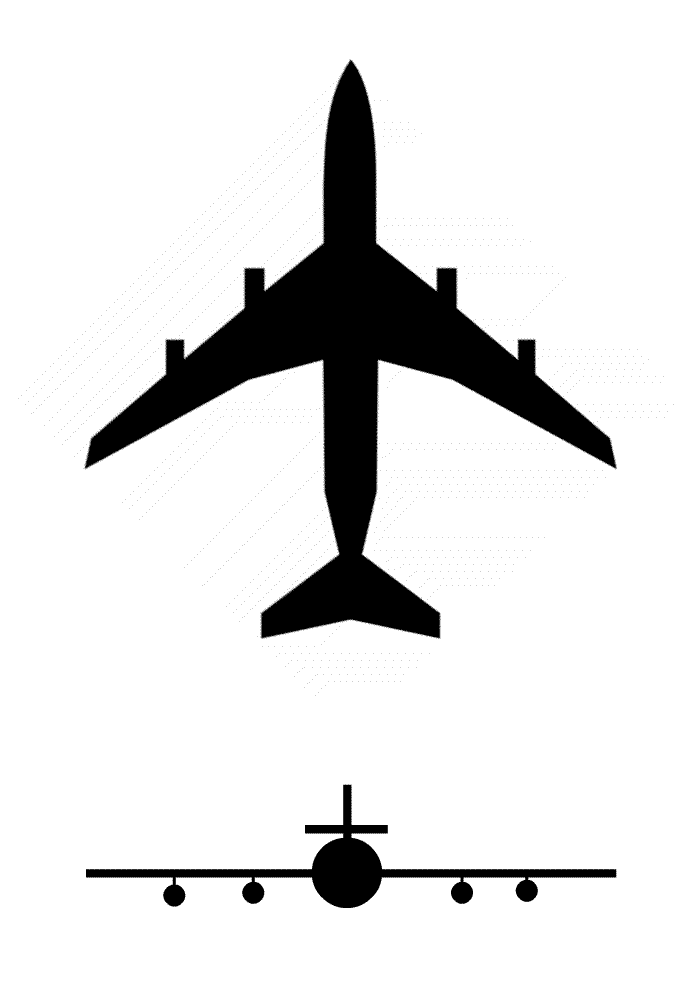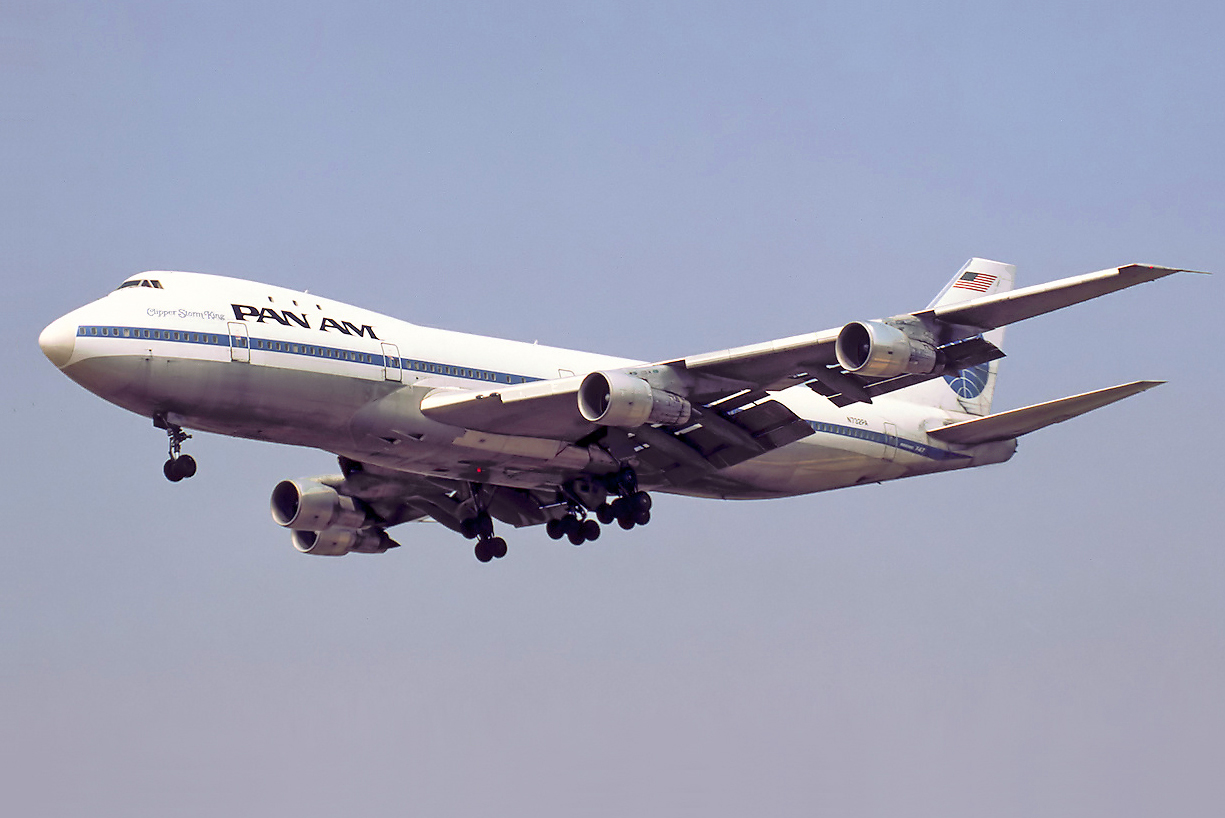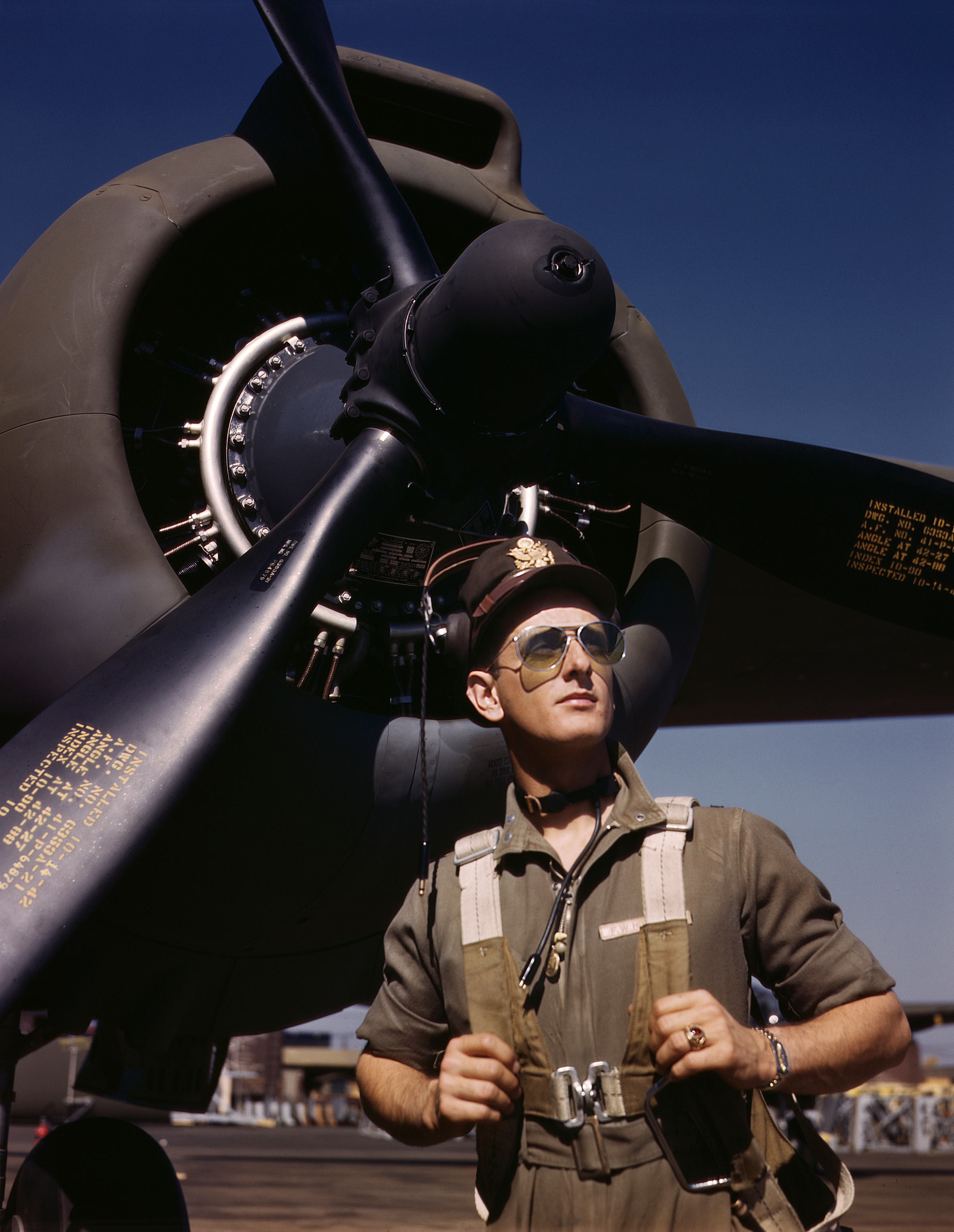|
Phugoid
In aviation, a phugoid or fugoid is an aircraft motion in which the vehicle pitches up and climbs, and then pitches down and descends, accompanied by speeding up and slowing down as it goes "downhill" and "uphill". This is one of the basic flight dynamics modes of an aircraft (others include short period, roll subsidence, dutch roll, and spiral divergence), and is a classic example of a positive feedback system. Detailed description The phugoid has a nearly constant angle of attack but varying pitch, caused by a repeated exchange of airspeed and altitude. It can be excited by an elevator singlet (a short, sharp deflection followed by a return to the centered position) resulting in a pitch increase with no change in trim from the cruise condition. As speed decays, the nose drops below the horizon. Speed increases, and the nose climbs above the horizon. Periods can vary from under 30 seconds for light aircraft to minutes for larger aircraft. Microlight aircraft typica ... [...More Info...] [...Related Items...] OR: [Wikipedia] [Google] [Baidu] |
Japan Airlines Flight 123
Japan Air Lines Flight 123 (JAL123) () was a scheduled domestic Japan Air Lines passenger flight from Haneda Airport in Tokyo to Itami International Airport in Osaka. On August 12, 1985, the Boeing 747SR operating this flight suffered a sudden decompression 12 minutes into the flight, and crashed in the area of Mount Takamagahara, Ueno, Gunma Prefecture, from Tokyo 32 minutes later. The crash site was on Osutaka Ridge, near Mount Osutaka. Japan's Aircraft Accident Investigation Commission (AAIC) concluded, agreeing with investigators from the U.S. National Transportation Safety Board, that the rapid decompression was caused by a faulty repair by Boeing technicians after a tailstrike incident during a landing at Osaka Airport in 1978 as JAL Flight 115. The rear bulkhead of the plane had been repaired with an improperly installed doubler plate, compromising the plane's airworthiness. Cabin pressurization continued to expand and contract the improperly repaired bulkhead u ... [...More Info...] [...Related Items...] OR: [Wikipedia] [Google] [Baidu] |
Aircraft Dynamic Modes
The dynamic stability of an aircraft refers to how the aircraft behaves after it has been disturbed following steady non-oscillating flight. Longitudinal modes Oscillating motions can be described by two parameters, the period of time required for one complete oscillation, and the time required to damp to half-amplitude, or the time to double the amplitude for a dynamically unstable motion. The longitudinal motion consists of two distinct oscillations, a long-period oscillation called a phugoid mode and a short-period oscillation referred to as the short-period mode. Phugoid (longer period) oscillations The longer period mode, called the "phugoid mode" is the one in which there is a large-amplitude variation of air-speed, pitch angle, and altitude, but almost no angle-of-attack variation. The phugoid oscillation is a slow interchange of kinetic energy (velocity) and potential energy (height) about some equilibrium energy level as the aircraft attempts to re-establish the e ... [...More Info...] [...Related Items...] OR: [Wikipedia] [Google] [Baidu] |
Short Period
The dynamic stability of an aircraft refers to how the aircraft behaves after it has been disturbed following steady non-oscillating flight. Longitudinal modes Oscillating motions can be described by two parameters, the period of time required for one complete oscillation, and the time required to damp to half-amplitude, or the time to double the amplitude for a dynamically unstable motion. The longitudinal motion consists of two distinct oscillations, a long-period oscillation called a phugoid mode and a short-period oscillation referred to as the short-period mode. Phugoid (longer period) oscillations The longer period mode, called the "phugoid mode" is the one in which there is a large-amplitude variation of air-speed, pitch angle, and altitude, but almost no angle-of-attack variation. The phugoid oscillation is a slow interchange of kinetic energy (velocity) and potential energy (height) about some equilibrium energy level as the aircraft attempts to re-establish the equil ... [...More Info...] [...Related Items...] OR: [Wikipedia] [Google] [Baidu] |
Aircraft Dynamic Modes
The dynamic stability of an aircraft refers to how the aircraft behaves after it has been disturbed following steady non-oscillating flight. Longitudinal modes Oscillating motions can be described by two parameters, the period of time required for one complete oscillation, and the time required to damp to half-amplitude, or the time to double the amplitude for a dynamically unstable motion. The longitudinal motion consists of two distinct oscillations, a long-period oscillation called a phugoid mode and a short-period oscillation referred to as the short-period mode. Phugoid (longer period) oscillations The longer period mode, called the "phugoid mode" is the one in which there is a large-amplitude variation of air-speed, pitch angle, and altitude, but almost no angle-of-attack variation. The phugoid oscillation is a slow interchange of kinetic energy (velocity) and potential energy (height) about some equilibrium energy level as the aircraft attempts to re-establish the e ... [...More Info...] [...Related Items...] OR: [Wikipedia] [Google] [Baidu] |
Spiral Divergence
The dynamic stability of an aircraft refers to how the aircraft behaves after it has been disturbed following steady non-oscillating flight. Longitudinal modes Oscillating motions can be described by two parameters, the period of time required for one complete oscillation, and the time required to damp to half-amplitude, or the time to double the amplitude for a dynamically unstable motion. The longitudinal motion consists of two distinct oscillations, a long-period oscillation called a phugoid mode and a short-period oscillation referred to as the short-period mode. Phugoid (longer period) oscillations The longer period mode, called the "phugoid mode" is the one in which there is a large-amplitude variation of air-speed, pitch angle, and altitude, but almost no angle-of-attack variation. The phugoid oscillation is a slow interchange of kinetic energy (velocity) and potential energy (height) about some equilibrium energy level as the aircraft attempts to re-establish the eq ... [...More Info...] [...Related Items...] OR: [Wikipedia] [Google] [Baidu] |
United Airlines Flight 232
United Airlines Flight 232 was a regularly scheduled United Airlines flight from Stapleton International Airport in Denver to O'Hare International Airport in Chicago, continuing to Philadelphia International Airport. On July 19, 1989, the McDonnell Douglas DC-10, DC-10 (registered as N1819U) serving the flight crash-landed at Sioux City, Iowa, after suffering a catastrophic failure of its tail-mounted jet engine, engine due to an unnoticed manufacturing defect in the engine's fan disk, which led to the loss of many Flight control system, flight controls. Of the 296 passengers and crew on board, 112 died during the accident, while 184 people survived. It is also the deadliest single-aircraft accident in the history of United Airlines. Despite the deaths, the accident is considered a prime example of successful crew resource management because of the large number of survivors and the manner in which the flight crew handled the emergency and landed the airplane without conventio ... [...More Info...] [...Related Items...] OR: [Wikipedia] [Google] [Baidu] |
Dutch Roll
Dutch roll is a type of aircraft motion consisting of an out-of- phase combination of "tail-wagging" (yaw) and rocking from side to side (roll). This yaw-roll coupling is one of the basic flight dynamic modes (others include phugoid, short period, and spiral divergence). This motion is normally well damped in most light aircraft, though some aircraft with well-damped Dutch roll modes can experience a degradation in damping as airspeed decreases and altitude increases. Dutch roll stability can be artificially increased by the installation of a yaw damper. Wings placed well above the center of gravity, sweepback (swept wings) and dihedral wings tend to increase the roll restoring force, and therefore increase the Dutch roll tendencies; this is why high-winged aircraft often are slightly anhedral, and transport-category swept-wing aircraft are equipped with yaw dampers. A similar phenomenon can happen in a trailer pulled by a car. Stability In aircraft design, Dutch rol ... [...More Info...] [...Related Items...] OR: [Wikipedia] [Google] [Baidu] |
Aviation
Aviation includes the activities surrounding mechanical flight and the aircraft industry. ''Aircraft'' includes fixed-wing and rotary-wing types, morphable wings, wing-less lifting bodies, as well as lighter-than-air craft such as hot air balloons and airships. Aviation began in the 18th century with the development of the hot air balloon, an apparatus capable of atmospheric displacement through buoyancy. Some of the most significant advancements in aviation technology came with the controlled gliding flying of Otto Lilienthal in 1896; then a large step in significance came with the construction of the first powered airplane by the Wright brothers in the early 1900s. Since that time, aviation has been technologically revolutionized by the introduction of the jet which permitted a major form of transport throughout the world. Etymology The word ''aviation'' was coined by the French writer and former naval officer Gabriel La Landelle in 1863. He derived the term from ... [...More Info...] [...Related Items...] OR: [Wikipedia] [Google] [Baidu] |
Greek (language)
Greek ( el, label= Modern Greek, Ελληνικά, Elliniká, ; grc, Ἑλληνική, Hellēnikḗ) is an independent branch of the Indo-European family of languages, native to Greece, Cyprus, southern Italy (Calabria and Salento), southern Albania, and other regions of the Balkans, the Black Sea coast, Asia Minor, and the Eastern Mediterranean. It has the longest documented history of any Indo-European language, spanning at least 3,400 years of written records. Its writing system is the Greek alphabet, which has been used for approximately 2,800 years; previously, Greek was recorded in writing systems such as Linear B and the Cypriot syllabary. The alphabet arose from the Phoenician script and was in turn the basis of the Latin, Cyrillic, Armenian, Coptic, Gothic, and many other writing systems. The Greek language holds a very important place in the history of the Western world. Beginning with the epics of Homer, ancient Greek literature includes many works ... [...More Info...] [...Related Items...] OR: [Wikipedia] [Google] [Baidu] |
Aviator
An aircraft pilot or aviator is a person who controls the flight of an aircraft by operating its directional flight controls. Some other aircrew members, such as navigators or flight engineers, are also considered aviators, because they are involved in operating the aircraft's navigation and engine systems. Other aircrew members, such as drone operators, flight attendants, mechanics and ground crew, are not classified as aviators. In recognition of the pilots' qualifications and responsibilities, most militaries and many airlines worldwide award aviator badges to their pilots. History The first recorded use of the term ''aviator'' (''aviateur'' in French) was in 1887, as a variation of ''aviation'', from the Latin ''avis'' (meaning ''bird''), coined in 1863 by in ''Aviation Ou Navigation Aérienne'' ("Aviation or Air Navigation"). The term ''aviatrix'' (''aviatrice'' in French), now archaic, was formerly used for a female aviator. These terms were used more in the ... [...More Info...] [...Related Items...] OR: [Wikipedia] [Google] [Baidu] |
Pilot-induced Oscillation
Pilot-induced oscillations (PIOs), as defined by MIL-HDBK-1797A, are ''sustained or uncontrollable oscillations resulting from efforts of the pilot to control the aircraft''. They occur when the pilot of an aircraft inadvertently commands an often increasing series of corrections in opposite directions, each an attempt to cover the aircraft's reaction to the previous input with an overcorrection in the opposite direction. An aircraft in such a condition can appear to be "porpoising" switching between upward and downward directions. As such it is a coupling of the frequency of the pilot's inputs and the aircraft's own frequency. During flight test, pilot-induced oscillation is one of the handling qualities factors that is analyzed, with the aircraft being graded by an established scale (chart at right). In order to avoid any assumption that oscillation is necessarily the fault of the pilot, new terms have been suggested to replace ''pilot-induced oscillation''. These include ''a ... [...More Info...] [...Related Items...] OR: [Wikipedia] [Google] [Baidu] |
Frederick W
Frederick may refer to: People * Frederick (given name), the name Nobility Anhalt-Harzgerode * Frederick, Prince of Anhalt-Harzgerode (1613–1670) Austria * Frederick I, Duke of Austria (Babenberg), Duke of Austria from 1195 to 1198 * Frederick II, Duke of Austria (1219–1246), last Duke of Austria from the Babenberg dynasty * Frederick the Fair (Frederick I of Austria (Habsburg), 1286–1330), Duke of Austria and King of the Romans Baden * Frederick I, Grand Duke of Baden (1826–1907), Grand Duke of Baden * Frederick II, Grand Duke of Baden (1857–1928), Grand Duke of Baden Bohemia * Frederick, Duke of Bohemia (died 1189), Duke of Olomouc and Bohemia Britain * Frederick, Prince of Wales (1707–1751), eldest son of King George II of Great Britain Brandenburg/Prussia * Frederick I, Elector of Brandenburg (1371–1440), also known as Frederick VI, Burgrave of Nuremberg * Frederick II, Elector of Brandenburg (1413–1470), Margrave of Brandenburg * Frederick Willia ... [...More Info...] [...Related Items...] OR: [Wikipedia] [Google] [Baidu] |





